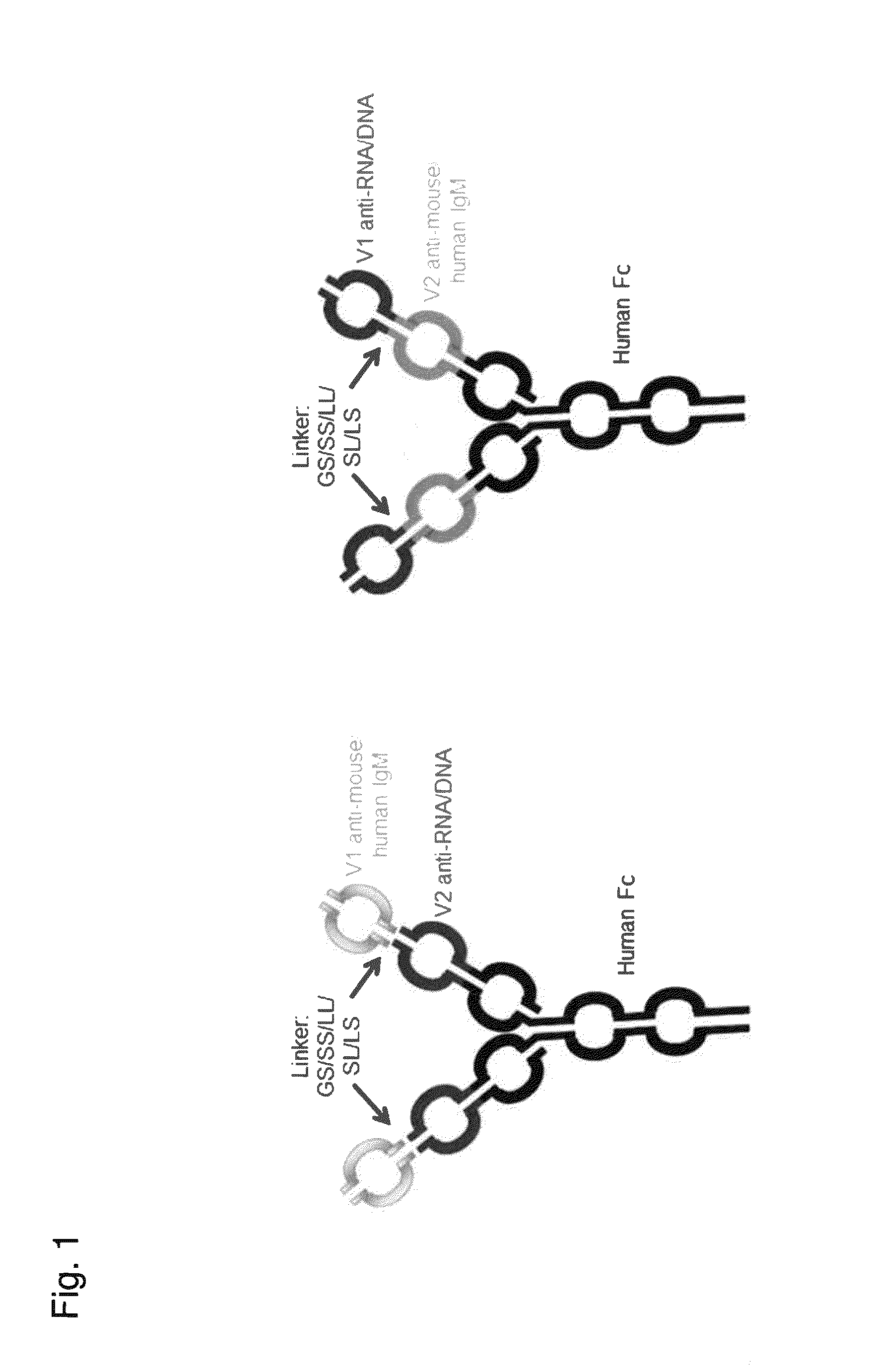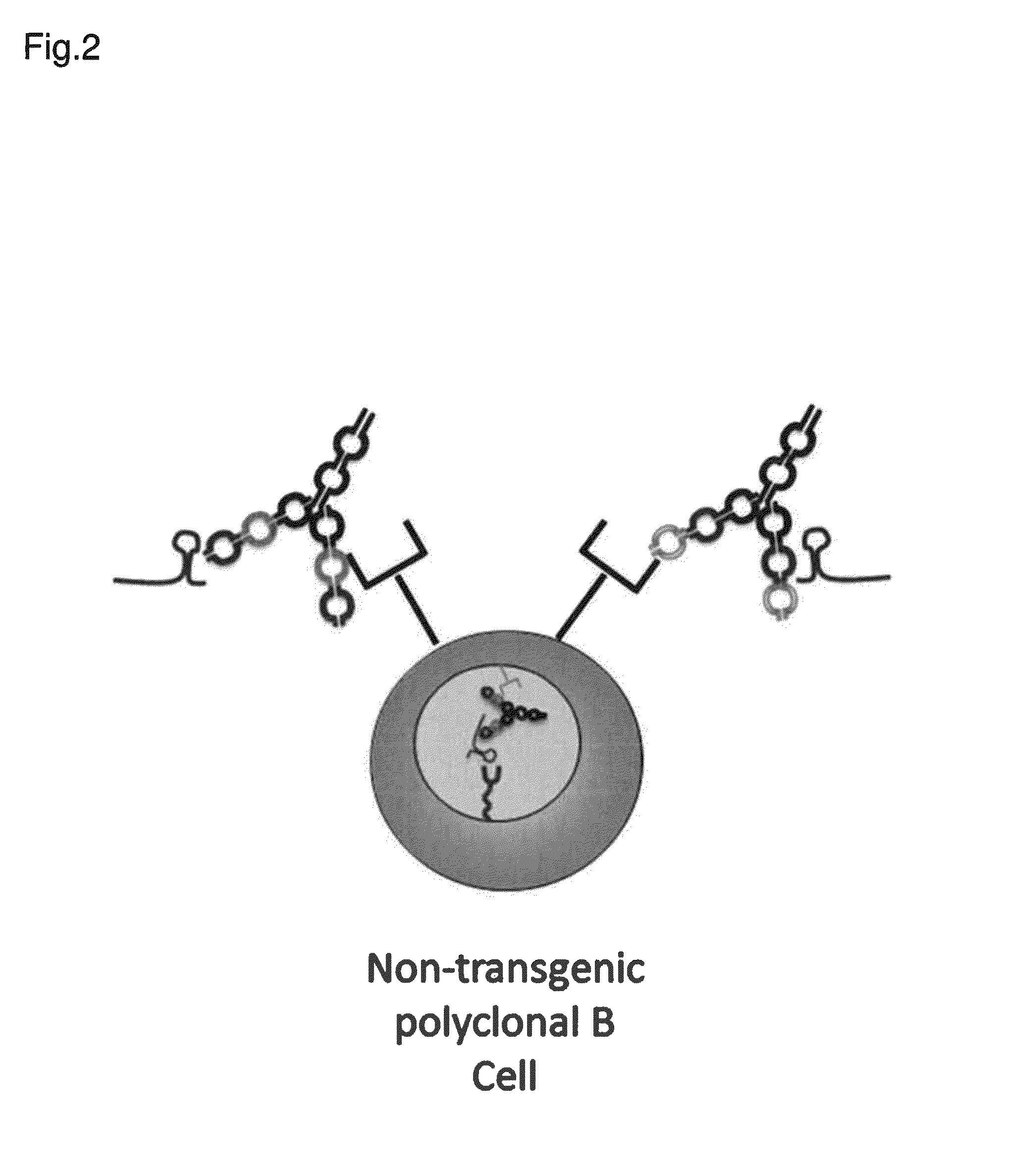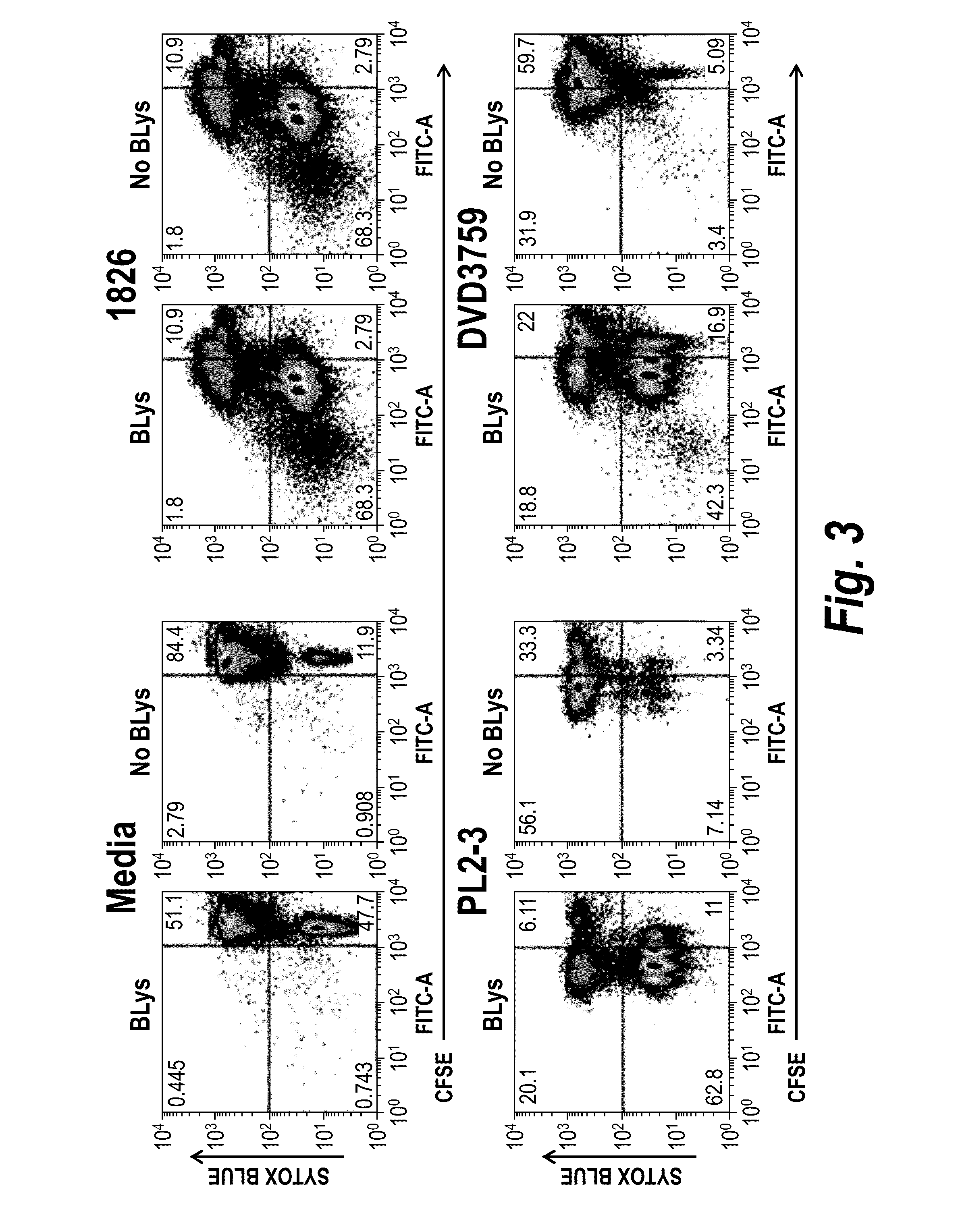Dual specific binding proteins directed against immune cell receptors and autoantigens
a technology of immune cell receptors and specific binding proteins, applied in the field of dual specific binding proteins directed against immune cell receptors and autoantigens, can solve the problems of inflammation and degradation, the etiology of these diseases is still poorly understood, etc., and achieve the effect of accelerating internalization (and/or catabolization) and provoking cell death and/or apoptosis
- Summary
- Abstract
- Description
- Claims
- Application Information
AI Technical Summary
Benefits of technology
Problems solved by technology
Method used
Image
Examples
example 1
Generation and Characterization of Anti-Mouse IgM and Anti-DNA Dual Variable Domain Immunoglobulin (DVD-Ig™) Protein
[0197]Four-chain dual variable domain immunoglobulin (DVD-Ig™) proteins were generated by synthesizing polynucleotide fragments encoding immunoglobulin variable heavy chain and variable light chain sequences and cloning the fragments into a pCDNA 3.3 vector (Life Technologies). The DVD-Ig™ constructs were cloned into and expressed in human embryonic kidney 293 cells and purified according to art known methods. VH and VL chain amino acid sequences for the DVD-Ig™ proteins are provided in Table 1. The SEQ ID NOs listed in the leftmost column of Table 2 refer to the sequences for the full variable domain of the heavy and light chains of the DVD-Ig™ proteins in that row of the Table. Each row in the rightmost column of Table 2 provides three SEQ ID NOs. The first number refers to the SEQ ID NO of the outer variable domain sequence, the second number refers to the SEQ ID NO...
example 2
Assays Used to Determine the Functional Activity of Parent Antibodies and DVD-Ig™ Proteins
example 2.1
Mice
[0199]The AM14 B cell receptor (BCR) transgenic mouse has been described previously (Sweet et al. (2010) Autoimmun 43(8): 607-18). Briefly, AM14 is a BCR comprising the AM14 heavy chain and the Vk8 light chain that recognizes murine IgG2a (mIgG2a) of the “a” allotype. Between 95-98% of B cells in a mouse positive for the AM14 heavy chain and Vk8 light chain express the AM14 BCR. To generate AM14 B cells that are deficient in TLR9, TLR7 or FcγRIIB, the AM14 and Vk8 genes were bred to the appropriate knock out mice.
PUM
| Property | Measurement | Unit |
|---|---|---|
| dissociation constant | aaaaa | aaaaa |
| concentrations | aaaaa | aaaaa |
| molecular weight | aaaaa | aaaaa |
Abstract
Description
Claims
Application Information
 Login to View More
Login to View More - R&D
- Intellectual Property
- Life Sciences
- Materials
- Tech Scout
- Unparalleled Data Quality
- Higher Quality Content
- 60% Fewer Hallucinations
Browse by: Latest US Patents, China's latest patents, Technical Efficacy Thesaurus, Application Domain, Technology Topic, Popular Technical Reports.
© 2025 PatSnap. All rights reserved.Legal|Privacy policy|Modern Slavery Act Transparency Statement|Sitemap|About US| Contact US: help@patsnap.com



